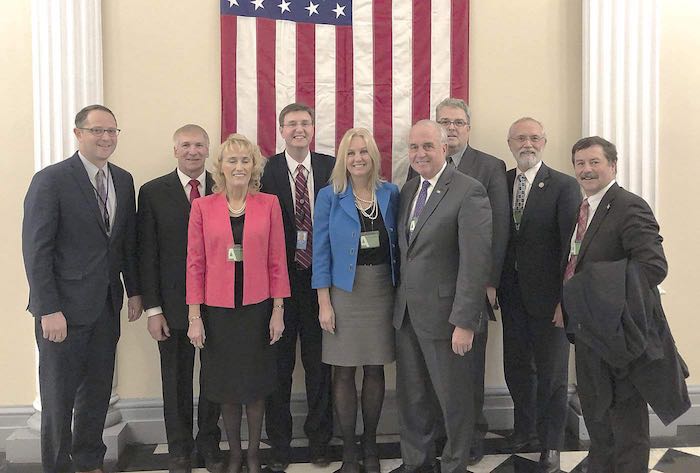forum
library
tutorial
contact

Second Half of Columbia Basin Project
Completion Depends on 'Political Will'
by Matthew Weaver
Capital Press, March 5, 2021
|
the film forum library tutorial contact |

|
Second Half of Columbia Basin Project
by Matthew Weaver
|
 Completing the second half of the Columbia Basin Project depends on "political will," said Vicky Scharlau, executive director of the Columbia Basin Development League.
Completing the second half of the Columbia Basin Project depends on "political will," said Vicky Scharlau, executive director of the Columbia Basin Development League.
And time -- lots of it.
"This is a long time and a lot of money," Scharlau told stakeholders during the league’s March 4 virtual conference .
The federal project delivers water to 671,000 acres of farmland, roughly 65% of the 1.03 million acres originally planned. The project was originally intended to be phased in over several decades.
Lawmakers recently asked the organization for a one-page document that fully explains what it would take to complete the project. It includes the expected length of time to complete each step:
Step one -- Authorization (completed): The project was authorized in 1945.
Step two -- Key partners commit to financial support: The federal Bureau of Reclamation must work with a non-federal cost-share partner that agrees to match funding for all studies. The "logical" partner is the State of Washington, Scharlau said. This partnership would be through the state Department of Ecology’s Office of the Columbia River.
"This means a commitment by both the governor and the state Legislature, because they would have to agree to a multi-year, multi-biennium commitment," Scharlau said. "Regardless of which party was in power, these commitments would have to continue over time."
Step three -- Appraisal study: Studies for feasible alternatives and water supply availability must take place first in order for the bureau to proceed, Scharlau said.
"There is adequate supply of water for all 1,029,000 acres," she said.
The state issued a storage certificate for 6.4 million acre-feet to Reclamation in 1938, and has a secondary permit for 3.2 million acre-feet for land now served. Reclamation would need an additional secondary permit for 2 million acre-feet from the state to complete the project.
During an appraisal study, Reclamation would work with partners to calculate the size and scope of the project, and potential suitable solutions. The appraisal study is estimated to take at least two years.
Step four -- Plan of study: The plan of study document lays the foundation for a feasibility study. The partners -- Congress and the Washington State Legislature -- would fund the study. The plan would take at least two years.
Step five -- Feasibility study. The feasibility study would take at least five years and provide a detailed evaluation of the entire project, including federal requirements such as Principles, Requirements and Guidelines for Water Implementation Studies, the National Environmental Policy Act, the National Historic Preservation Act, the Fish & Wildlife Coordination Act and the Endangered Species Act.
The planning partners would identify which options are feasible for federal funding. The study and recommended decision would then be submitted to the secretary of the Interior and Office of Management and Budget, which determine whether it would go to Congress for funding.
The planning partners must also complete a planning report on the design work and costs and environmental impact statement, among other requirements.
The estimated costs for steps three, four and five are $25 million.
As a comparison, the Odessa Subarea Special Study feasibility study for the first half of the project took seven years and $14 million, according to the paper.
Step six -- Construction: Construction is estimated to take at least 10 years and cost $3 billion to $5 billion.
Costs are difficult to estimate, as they can only be determined once all the studies and plans are done.
Additional costs for off-channel storage construction may be needed if it is found that Columbia River flows are not adequate to support diversions during the irrigation season, according to the paper.
Related Pages:
Washington Delegation Meets with White House about Columbia Basin Project by Matthew Weaver, Capital Press, 12/19/17
learn more on topics covered in the film
see the video
read the script
learn the songs
discussion forum
